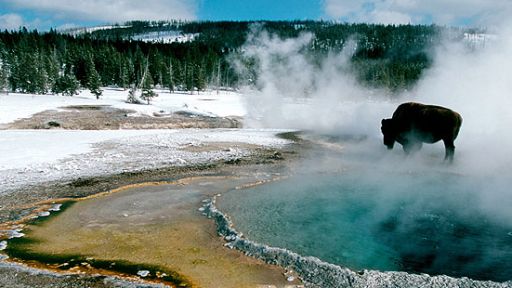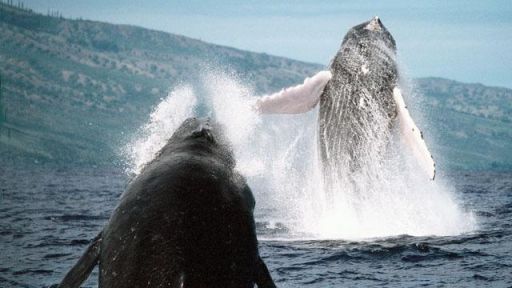Gehan De Silva Wijeyeratne is the CEO of an adventure and ecotravel company. He is also a self-professed naturalist, geographer, writer, and tourism personality for Sri Lanka. After the tsunami, he spent four days working with search teams looking for survivors and bodies.

Did you find any dead animals during your search?
What was astonishing was that we didn’t come across any dead bodies of animals, except one fish. It’s remarkable that with so many human casualties, the wildlife could have escaped unscathed.
Why do you think there were no dead animals? How do you think they escaped?
It was very clear that there were no dead animals because some of the bigger mammals that go there, the wild pig, the water buffalo … [their] corpses would have been very evident visually. Also, as you progress to the fourth day, if there were dead animals, the bad smell from the carcasses would have wafted into the breeze and would have been picked up. So it is very much a confirmed fact that the animals escaped the tsunami.
To move to your next question, how did they escape? There were a number of reasons. First, of course, the density of animals on the coastline was low. That doesn’t mean there weren’t any when the tsunami struck, because we know when one of the naturalists of the game lodge was fleeing, intuitively followed a group of a kind of leaf monkeys. He knew that if he ran behind the monkeys, they would lead him to safety. It seemed like they had an extra warning period of anything from a few seconds to a few minutes or more. And this could be underlain by scientific bases; one could simply be that animals’ hearing is so much more sensitive [than humans’]. An animal can hear a dry leaf rustle at 100 meters (328 feet). … As the wave rode into the shore, it is possible that they had just a few seconds of extra warning. The leaf monkeys, the giant squirrels, the lizards, and snakes just had that extra few seconds to run away to safety.
For the other mammals, like elephants, it becomes more interesting. Did they perhaps have several hours of prior notice? We know that elephants communicate using infrasounds. They can communicate by using special nerve centers. … They will stamp on the ground and send seismic waves, and other elephants can pick this up because the soles of their feet have passing corpuscles that are arranged like layers of an onion. These then act like ground listening antennae or receptors. So they take these signals in, and they have a sophisticated neural apparatus for filtering out background noise and filtering what they need to hear, and they amplify that.
One possibility is when the earthquake happened off Sumatra, some of those ground waves were detected by them, giving them a forewarning. Another possibility is as a tsunami wave came in, there would have been some wave energy carried as seismic waves, some as infrasounds, either groundborne or airborne. Animals like elephants could have picked it up. And it’s possible that they gradually moved away. This could be why there weren’t many reports of animals fleeing in a hurry. Other animals like the water monitor — a kind of reptile — and the giant squirrels, who don’t have this sophisticated communication apparatus, would have listened to wavelengths that we hear. But [their hearing] intensity is so accurate that it could have given them that extra five seconds to race up a tree or flee an extra 50 meters (164 feet) inland. At the time [of] the tsunami, that was the difference between life and death.
Do you think animals have a “sixth sense”?
Well, I think unfortunately this sixth sense has been portrayed as some kind of psychic sense or extrasensory perception. I’ve watched elephants using infrasounds. I’ve seen elephants in Yala standing motionless with their trunks on the ground. I’ve seen people coming up to the water hole saying, “It’s just an elephant standing still and motionless,” and they will pass. I’ve realized what the elephant is doing is actually communicating, and I’ve stayed to see what that elephant is communicating with. Five minutes later, I’ve sometimes seen a family herd arriving, and in one case I saw one bull elephant and the two were clearly communicating with each other, because as soon as the other bull emerged out of the forest, there was violent confrontation.
So there’s a lot of field evidence, scientifically proven, that elephants communicate using infrasounds over distances over 40 kilometers (25 miles). It doesn’t mean that [the animal is] psychic, and it could be this kind of thing outside our perception that allows animals to detect danger before we do. There’s a lot of evidence documented that when an elephant is shot in one area, especially in South Africa, elephant herds 30 to 40 kilometers (18 to 25 miles) away have responded with a lot of distress. Just as we will communicate orally in some wavelengths, which you and I can hear, the elephants are communicating in a normal way, but using infrasounds that we can’t hear.
Mammals such as lions are also known to have very sensitive nerve receptors on their feet. So clearly mammals have adaptations for detecting groundborne vibrations. It could be to help them detect prey, or it could be that when one mammal groans and claims its territory, some of the groundborne vibrations travel long distances. Infrasounds do travel long distances and curve around the earth. So we may think its psychic and something to be scoffed [at]. But there probably are very practical, scientific reasons to explain why animals survived the tsunami and humans didn’t.
Perhaps you just didn’t find dead animals? They may have washed out to sea.
It’s certainly a possibility, but it’s just as likely that if animals did die in the tidal wave a portion of those bodies would stay on land. And what we found with humans was that most bodies remained on land and got snagged on bushes and trees and so on. At the Yala Safari Game Lodge, for example, of the 55 people who died, all were eventually recovered. So it’s unlikely that all animals would have been swept offshore.
Do you think reptiles have the ability to sense that danger is coming?
With reptiles, I don’t think much work would suggest that they communicate using infrasounds, not airborne infrasounds, but it’s very clear that they detect seismic or groundborne waves, some of which may be traveling at infrasound wavelengths. One of the naturalists at the game range told me that when he climbed up one of the trees, together with those who were fleeing were snakes and lizards. That’s very interesting, because if they tried to flee from the source of the sound, if it [had been] just a point source of danger, they would have attempted to just run along the ground and then they would have got caught up in the tsunami and we would have found bodies of land monitors that were quite prevalent there. But we didn’t. So it suggests that they could [have] listened three-dimensionally, and gauged that [the danger was] not coming from a point source but … from a very broad front. And of severe magnitude, which meant their best bet for safety was to go straight up.
Why do you think humans don’t have the ability to hear infrasounds?
The evolutionary process worked in such a way that the primates who had binocular vision, who had a greater area of cerebral cortex unit, who had high brain power to use tools and learn agriculture, and who could reproduce very well were able to colonize new habitats and face danger using intelligence as the key tool for survival and as a colonizing tool. The intelligence was so powerful that it meant any losses you made in terms of not having the same auditory range … also not hearing the ultrasound wavelengths, not hearing the infrasound wavelengths … and in terms of our optical apparatus, not seeing in ultraviolet and not seeing in infrared … the advantage of using the brain for three-dimensional thinking, for lateral thinking, for being able to store memories, for being able to anticipate, to be able to premeditate actions — the advantages far offset the disadvantages of using brain power for other resources, and I think this is why the human mammal has evolved as it is. …. As for other mammals, due to various environmental pressures, [they] based their bets on other sensors, perhaps seeing ultraviolet, hearing infrasound, and then they went on a particular evolutionary pathway.
How do you explain the fact that some elephants that were carrying tracking devices did not move great distances prior to the tsunami?
Well, if you were an elephant and you heard these energy waves coming from the sea, and you were a few hundred meters away from the sea, the chances are you thought you were safe where you were. Only the mammals who were able to detect it, who were right on the shoreline, who felt possibly vulnerable, moved away. And if they had a prior warning they would have moved away gradually. I think the data would have been more interesting if the elephant was picked up right on the shoreline than [if] … it actually moved away. It is unusual for elephants to be right on the shoreline. For a large mammal like an elephant, however large it is, the fight-or-flight zone could be just a few tens of meters, so even if the elephants heard the tsunami coming and they were 200 to 300 meters (656 to 984 feet) inland, they wouldn’t have felt threatened because they know it’s coming from the sea and they feel they have 200 to 300 meters between them and the sea. … Chances are that they were on higher ground and had some sort of vantage looking down and they would have felt safe there because they had enough time to react to danger.
So how do elephants figure out that a tsunami or some seismic event is creating a burst of infrasound energy? How do they realize something out of the ordinary is happening?
Well, in terms of the filtering mechanism, it has to do with the brain being highly evolved for listening and sound. … Imagine you and I are in a very crowded park. Music is blaring, there are 100 conversations going on. Not only can I keep a conversation between us going, I can suddenly tune into a conversation at that table or at that table. … If you’re driving through traffic or walking through traffic, if an unfamiliar vehicle toots its horn, you know it’s danger. So it’s much the same thing; we don’t realize we are good at filtering out the noise we don’t want to hear, but still keeping the channel open for something unusual that spikes up, something that potentially warns us of danger. I think for elephants it’s the same way. They can cut out the mundane noise, but listen to something unusual and say, “Hey, what’s that?”












